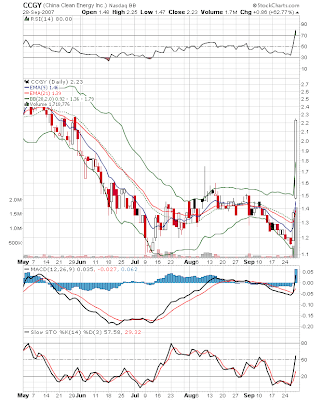I finally purchased my first share of Berkshire Hathaway today. Yes, its only 1 share but at $4,700 per share you want to ease into this sort of investment! BRK has two classes of shares. The A-class share (BRK-A) which sell for $140,000 EACH and the B-class share. I obviously bought the poor man’s class.
I had been watching it for the past year and every time I was going to buy, it had jumped 10% in the past week. I kept waiting for a pullback, but the stock would only consolidate and then after forming a base would jump again. I finally took the plunge and put in an order on Sunday, to be executed when the markets opened bright and early Monday morning.
With investments in a variety of different sectors like consumer retail, homebuilding, financials, commodities, currencies and foreign markets, its more diversified than most hedge funds. And it has lower fees than them too.
I’m going to try and attend the annual Berkshire shareholdes meeting in Omaha, Nebraska in the spring. I’ve heard there’s some sort of snobbery attached to owning the A-class shares vs the B-class. Apparently its the first thing other shareholders inquire when they meet each other there.
But even if I could afford to plunk down $140k in one stock, I’d still buy the B-shares. The B-shares don’t carry any voting rights, but I’m not going to delude myself into thinking that 1 lousy A-class share or even 1,000 shares would carry any weight in the running of the company. Warren Buffett owns the majority of the voting shares and besides, most shareholders vote to go with Buffett’s decisions anyway.
The advantage to owning B-class shares is that if you need the money to pay for a new house, a college degree, a heart-transplant or maybe a yacht, instead of selling $140,000 worth of stock in one go (and facing the resulting tax consequences), you can sell the exact amount you need (in ~$5,000 increments) and keep the rest invested. Its up 50 times in the past 10 years, and nearly 30% in the past year. Definitely a stock worth keeping for the long term.
Where else can I get a Billionaire to look after my investments and send me free investment advice every year?



![p[Get 77% returns with this stock newsletter]](http://i243.photobucket.com/albums/ff92/reallykool/AD_newsletter.jpg)
![[Graph of 10 Year Treasury Yield over past 3 months]](https://bp0.blogger.com/_E09Nv_jsQcQ/Rte4UOvveOI/AAAAAAAAAFw/OSfHloMkDyQ/s400/10+Yr+Tbill.png)
